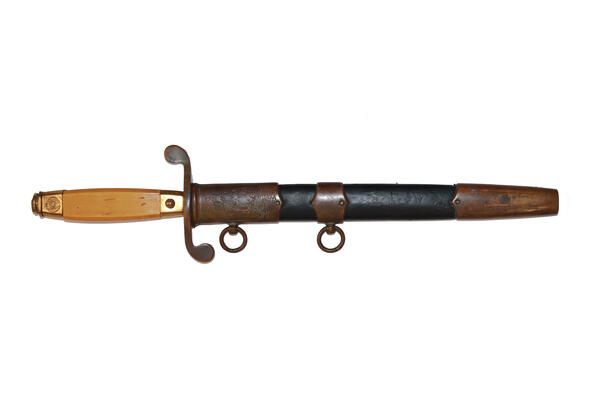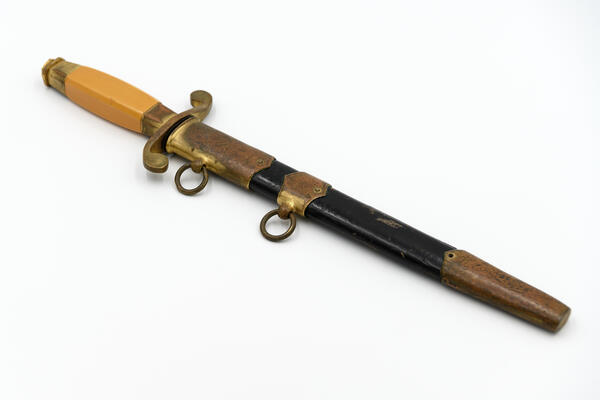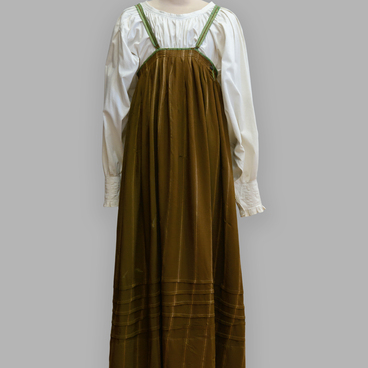The Polyarny Museum of History and Local Lore presents the dirk of Georgy Mikhailovich Palamarchuk, the Hero of the Soviet Union. The dirk was made in 1945, it was later transferred by Georgy Palamarchuk to the room of military glory of the Missile Boat Brigade (in the village of Granitny). After the dissolution of the settlement, the dirk was transferred to the political department of the Kola Flotilla for storage. Then it was transferred for permanent storage to the Polyarny Museum of History and Local Lore.
Georgy Palamarchuk was born in Pervomaisk, Mykolaiv Oblast, Ukraine. His glorious career as a military sailor began in 1939. Palamarchuk studied at the Higher Naval School named after Mikhail Frunze. He was then transferred to the Caspian Higher Naval School. In November 1941, he graduated from it and left to fight on the land front. Palamarchuk commanded a platoon and then a battalion of the 74th Marine Rifle Brigade. In May 1942, he was the commander of torpedo boat No.12 of the 1st separate division of torpedo boats of the Northern Fleet. He went to sea 80 times, where he participated in mine laying, reconnaissance landings, attacking enemy ships and rescuing pilots after accidents.
On December 22, 1943, torpedo boat No. 12 under the command of Palamarchuk took part in the attack of an enemy convoy and sank a destroyer. Enemy boats opened fire on Paramchuk’s torpedo boat. As one of the shells hit the engine compartment of the ship, he was wounded in both legs. The commander did not leave his post until he brought the boat to the base. “For the display of bravery, courage and combat skills, sinking a destroyer, landing troops on the enemy’s coast, rescuing six pilots, being part of 12 active mine installations in enemy waters, ” he was awarded the title of Hero of the Soviet Union.
In the 16th century, dirks appeared and became a widespread weapon for naval hand-to-hand combat as well as a hunting
weapon. In 18th-century Russia, dirks with fairly
wide blades replaced swords for non-combatant ranks of the army, and from the
second half of the 19th century they have become an indispensable accessory of
the naval officers’ uniform. In the Soviet Navy, officers wore dirks of the
pre-revolutionary model until 1940. In 1940, a new dirk was adopted for naval
officers, which in 1945 was slightly modernized and acquired its current
appearance. From the same year, the dirk was adopted for wearing with a naval
uniform for midshipmen and sergeant majors of the Soviet Navy. Currently, in
the Russian Armed Forces, the dirk is worn only by officers and admirals of the
Navy in full-dress and front-dress uniforms.





